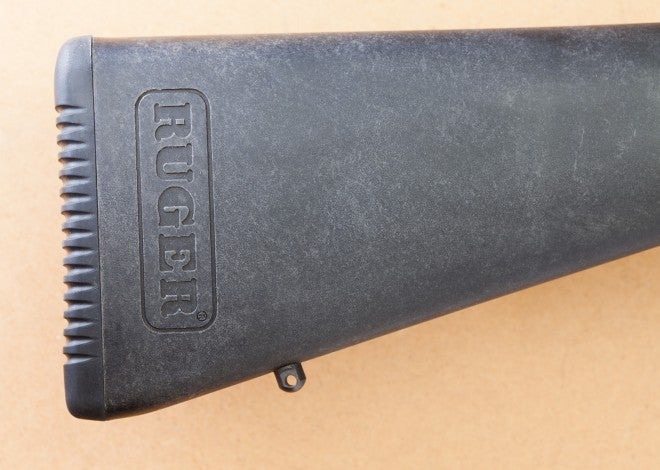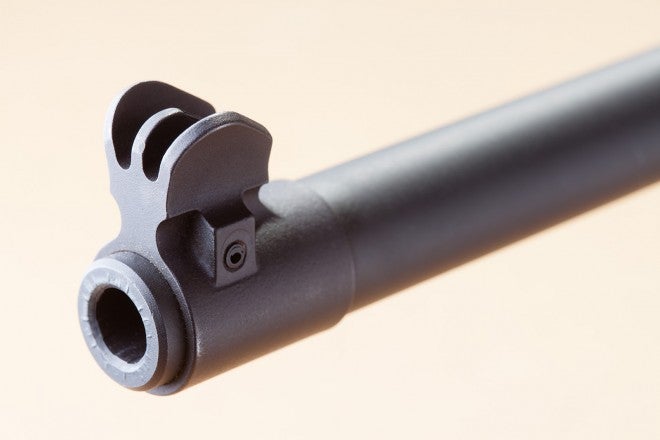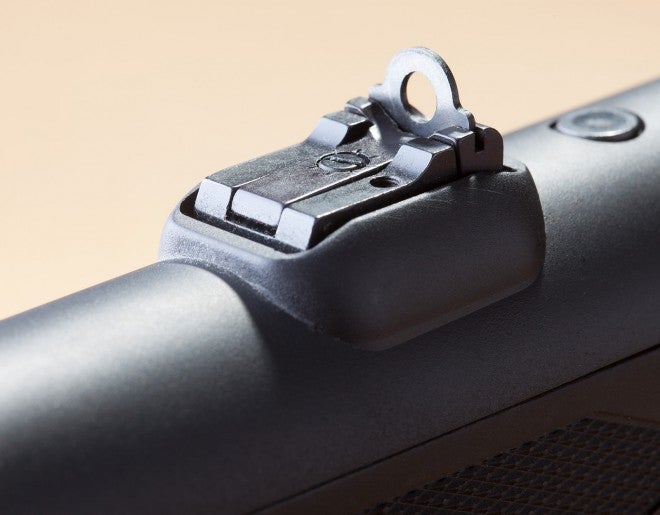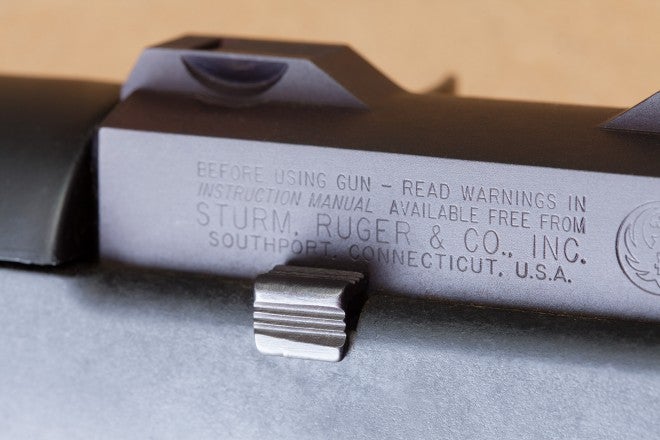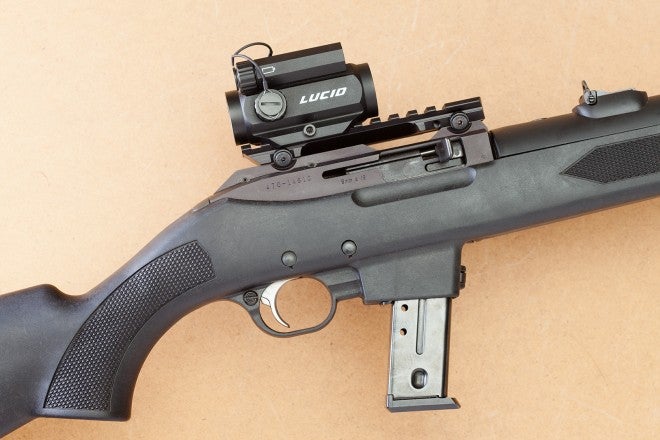Review: Ruger PC9 carbine
Frank Stratton 02.11.15
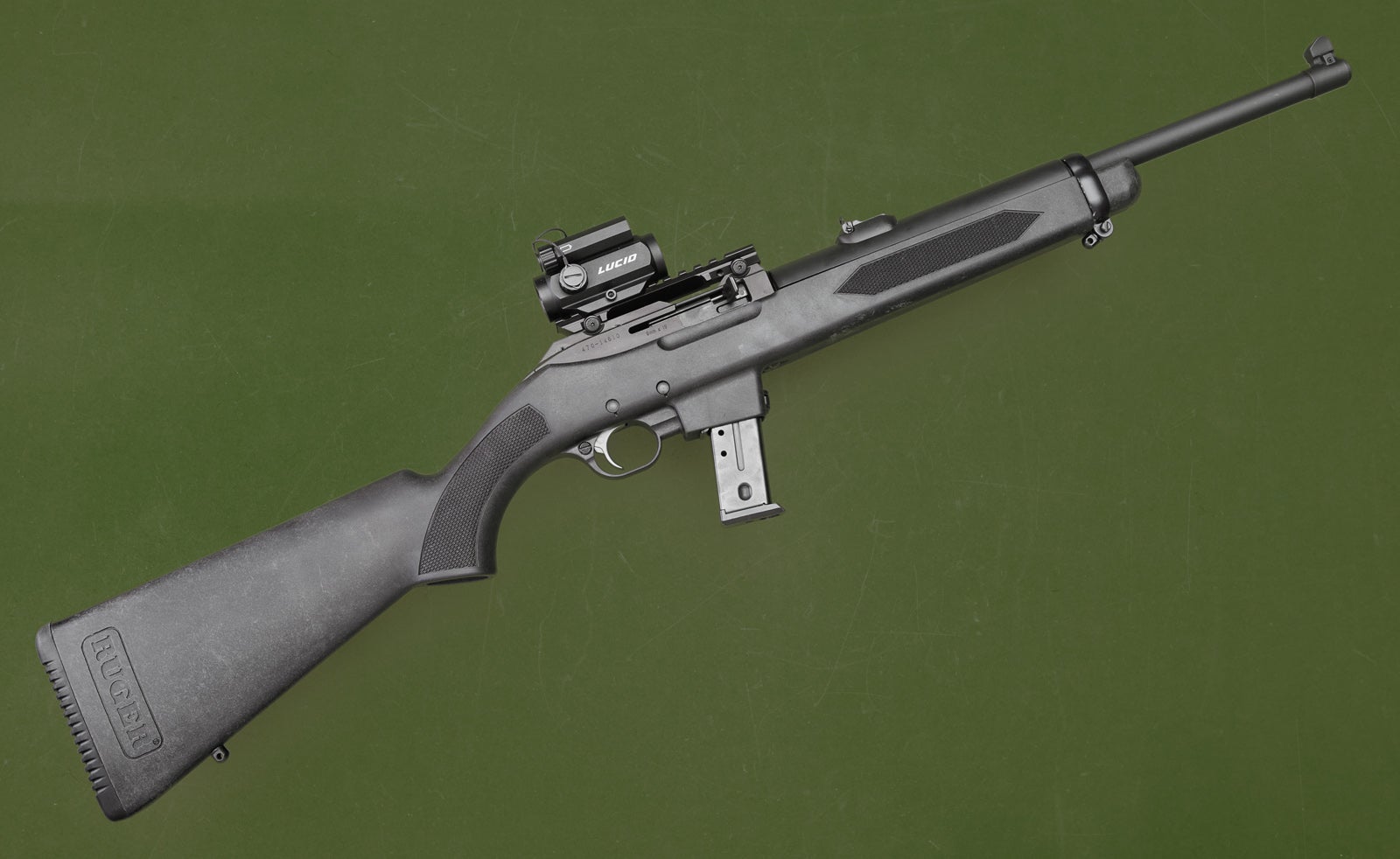
The Ruger Police carbine was designed by as a companion long arm to go with their P series pistols. This was to cash in on the trend of many law enforcement departments adding a carbine as an alternative or an addition to a shotgun for patrol cars. Ruger P series pistols use the same magazines and were offered in both 9mm and .40 caliber chamberings. Ruger made these carbines for 10 years, 1996 to 2006, marketing them to police departments but selling them to private buyers as well.
The carbine is externally a traditionally styled long arm with a manual push-button safety located behind the trigger guard. The magazine release is located on the slightly lowered magazine well, and the cocking handle is located on the bolt they operate from the right side. There is a bolt release located on the left side of the receiver. The bolt locks back on an empty magazine after the last shot. The balance point is located between the supporting hands, making it fast to shoulder and track a target.
The stock is solid black polymer with molded checkering on the wrist and forearm, capped with a rubber buttplate that is ribbed and rounded. It has two sling swivels one on the front barrel band and one on the bottom of the buttstock midline.
The metal sights consist of a military style front with protective wings located at the muzzle and a “ghost ring” rear sight located 12 ½ inches back from it.
The top of the receiver is milled to accept Ruger scope rings.
Like most pistol caliber carbines, the Ruger is a blowback operated autoloader. That means the weight of the bolt and the expansion of the case is what keeps the chamber sealed until the pressure is low enough for the action to extract the fired case and chamber the next round. In center fire guns, this means the bolt has to be heavy. In order to keep the carbine compact and balanced, Ruger designed a two piece bolt. The working bolt in the receiver that houses the extractor, ejector, and firing pin and the massive bolt are located in the forend. They are connected by steel rods. The combined mass of these is enough to hold the breech safely closed during firing. Without an expanded case in the chamber to add friction, the bolt is held closed only by the recoil spring. To keep the bolt closed when not firing, Ruger added a bolt safety lock to the working bolt. It is deactivated by pulling back on the bolt handle or pulling the trigger. This is typical Ruger “belt and suspenders” engineering.
Being designed for short range and fast action, the PC was shot at 15 yards with the issue iron sights. The accuracy was as expected: two inch groups with lots of touching holes.
The PC9/4 carbine is a good addition to any urban dweller’s arsenal. Ruger has always made quality firearms that were priced on the lower end of the scale. Both it and the Ruger P series pistols can be generally found on the used market at a lower price than most other brands. While the weight is more like a full sized rifle, the carbine is compact and well balanced. Also it is solid enough to use as a melee weapon.
The roots of its design are from the 20th Century 2nd generation carbines. That means no rails or pistol grip, no muzzle break/flash hider, and night sights. It is a solid firearm that will take a lot of abuse and function accurately and reliably. The only change I would recommend is the addition of an electronic sight, such as the Lucid M7 shown above or an Aimpoint. While the top of the receiver is milled for Ruger scope rings, you can mount a Picatinny rail adapter to the receiver. For best cheek weld, you will want to choose a sight that is lower than those sold for AR straight stock style rifles.
Specifications:
- Over all length: 34 inches
- Barrel length: 16.24 inches
- Sight radius: 12.5 inches
- Length of pull: 13.25 inches
- Weight unloaded: 7 pounds
- PC9 Sights military front, Ghost ring rear
- Calibers: 9mmx19 or 40 S&W
- Feed system: Ruger P series design box magazines, 10 to 20 round available.

